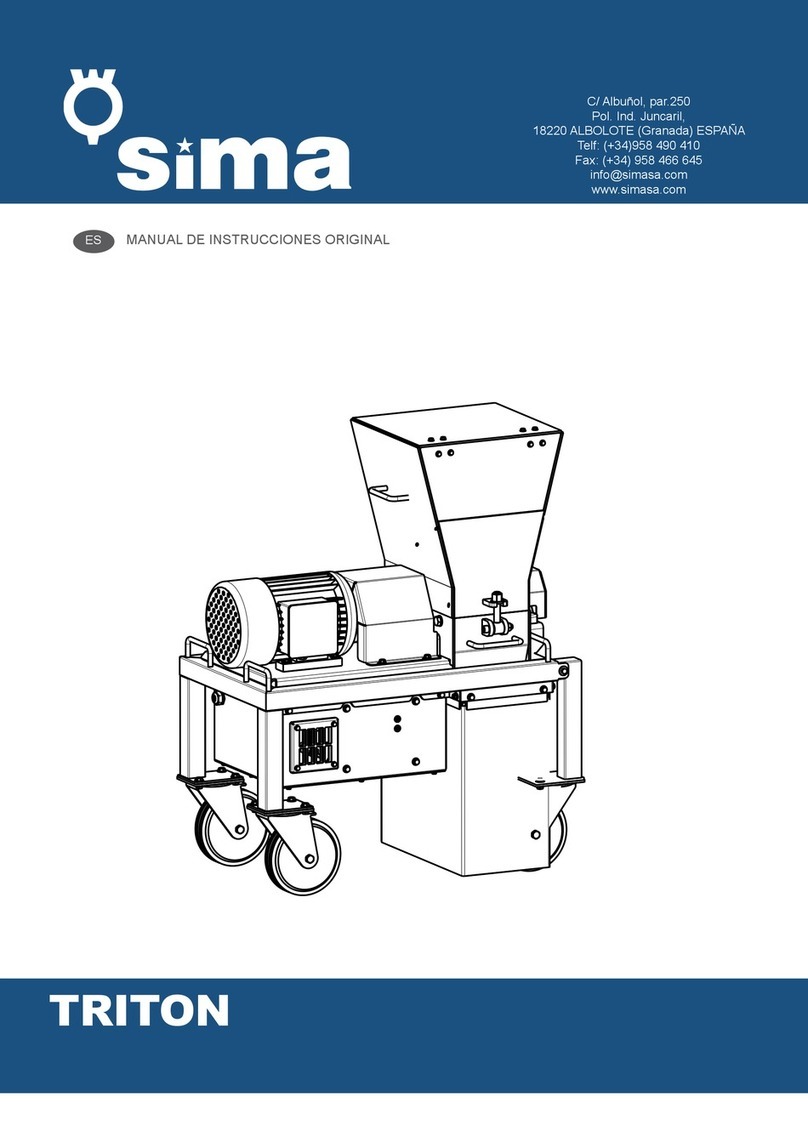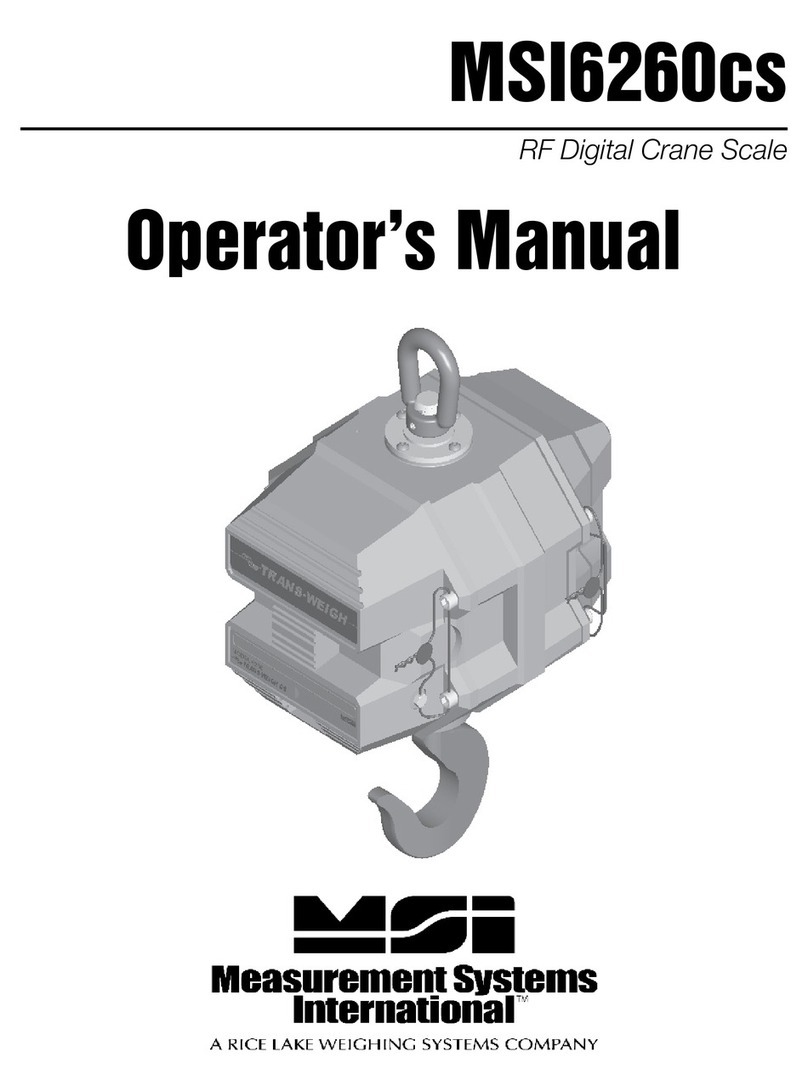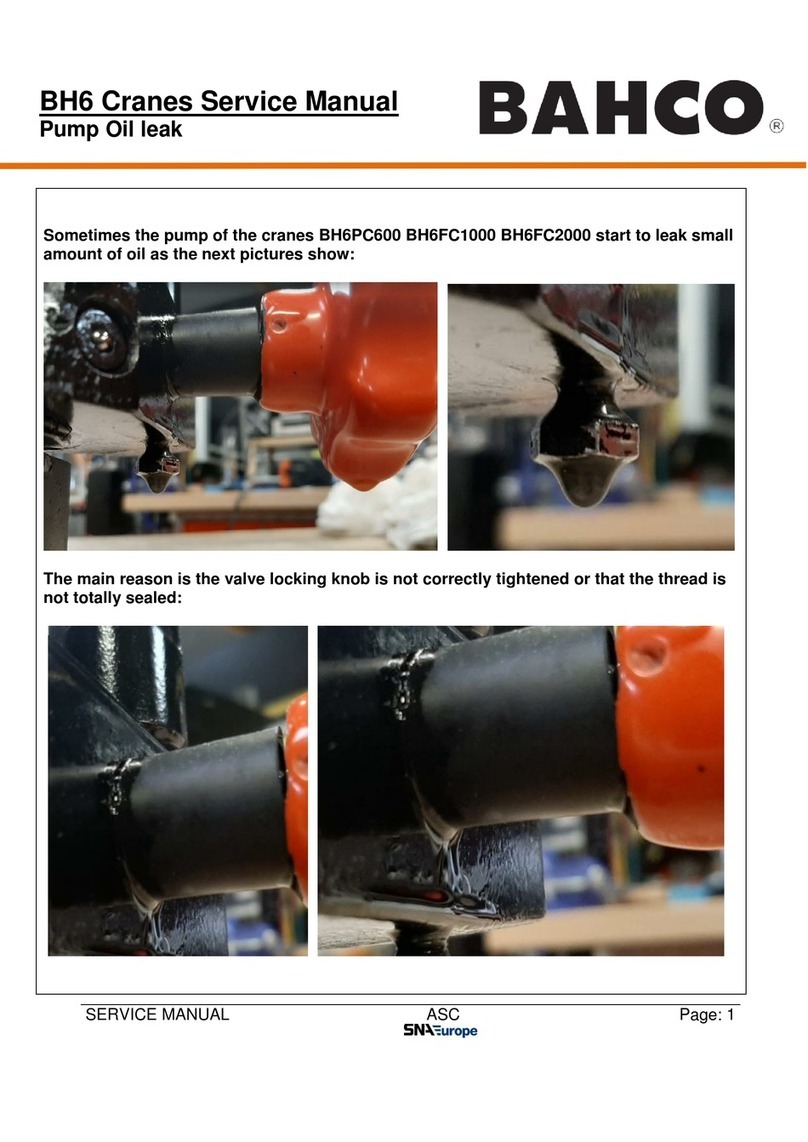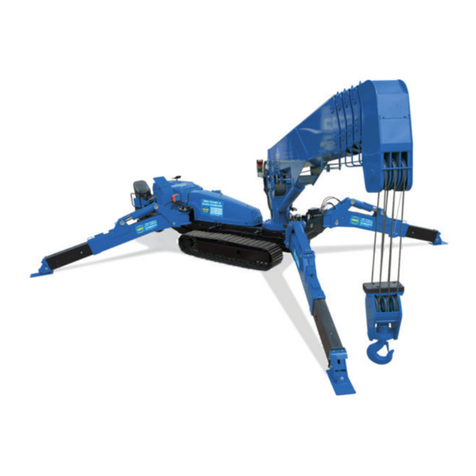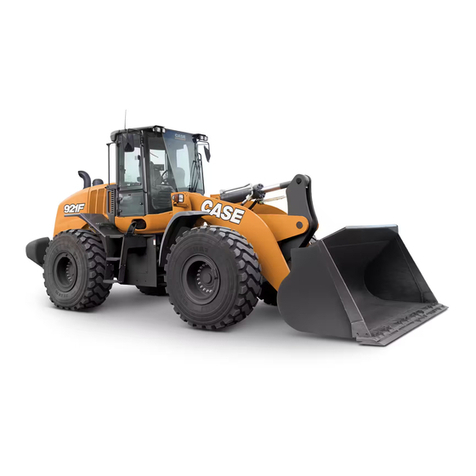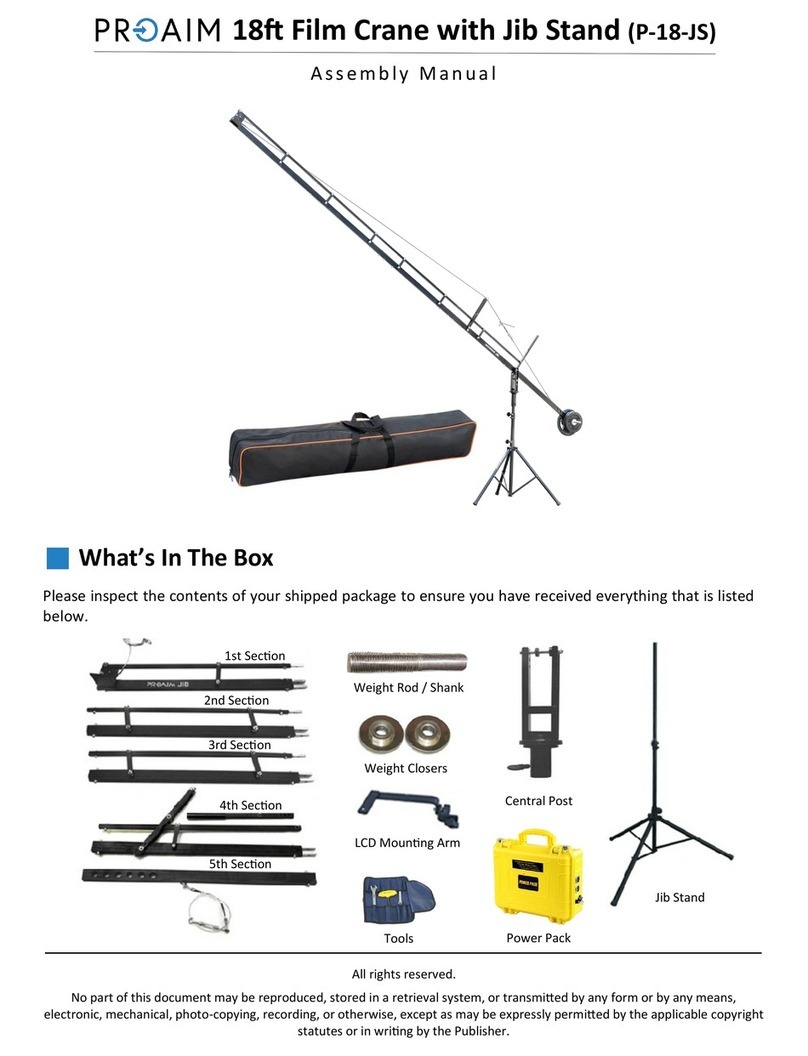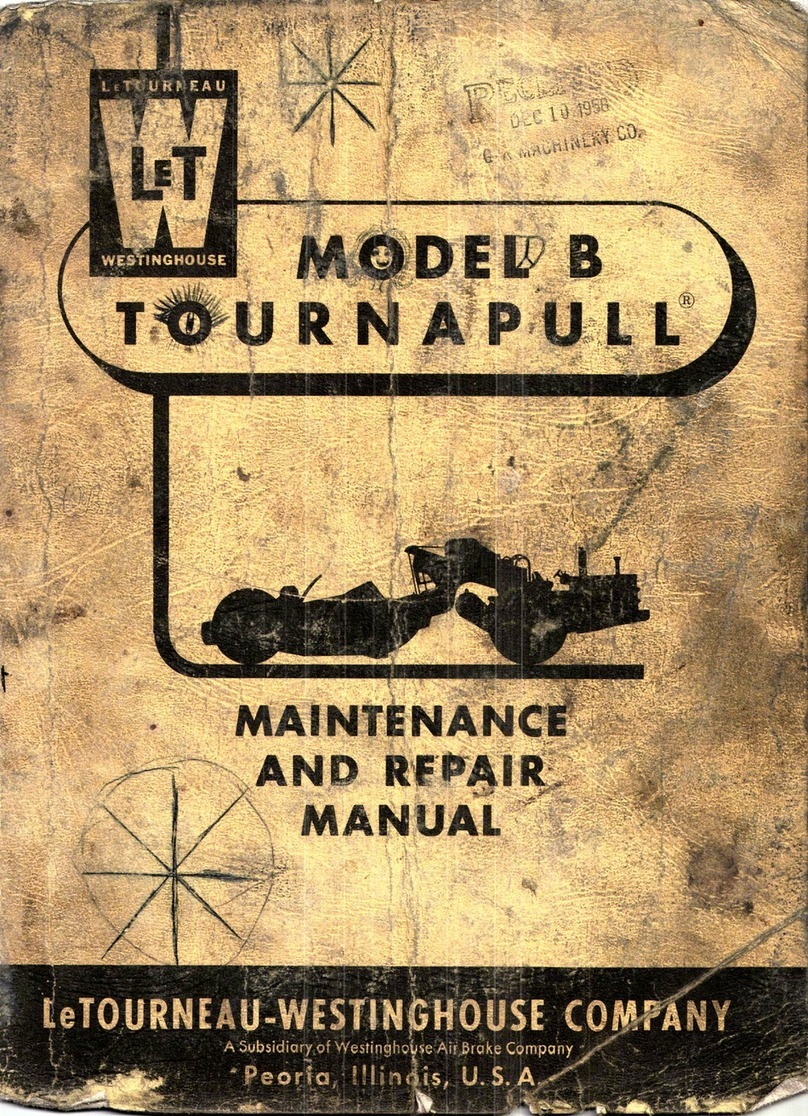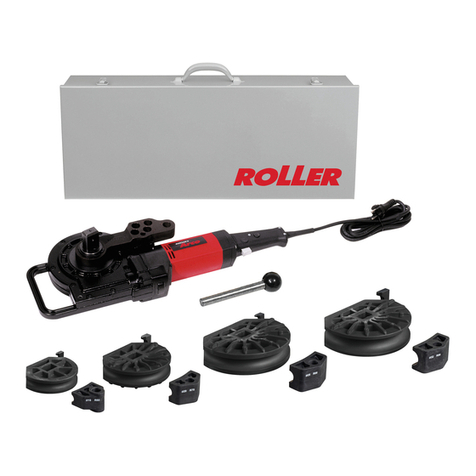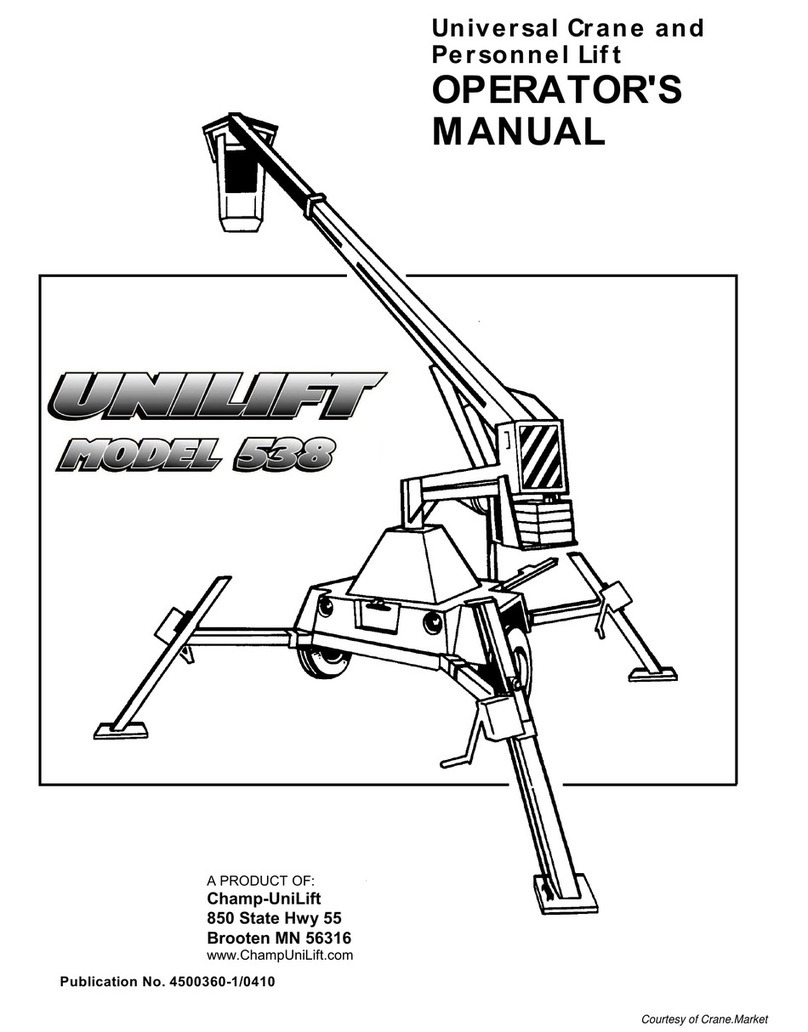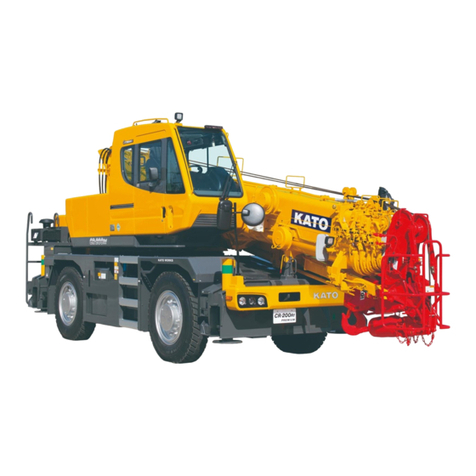Wienold Lifte MFC750/K User manual

OPERATING MANUAL
.de
-
MFC/K
MFC/Ks
MFC
Mini Floor Crane
Release: 1.4
14.Nov.2017

Contents
3
4
5
6
8
10
15
17
18
20
21
22
24
26
27
28
30
31
2
MFC Mini Floor Crane
Basic procedures
General description
MFC Series typ overview
COMPONENTS
MFC/Ks
MFC/K
SAFETY
Safety instructions
Pre-operation inspection
Working area inspection
Function tests
Operating instructions
INSTALLATIONS
MFC/Ks
MFC/K
OPERATION
Telescope and Hydraulic Cylinder
Lateral outrigger
Loading
Transportation
Technical data
Declaration of conformity

Copyright © Norbert Wienold GmbH 2015. All rights reserved.
Contact:
3
MFC Mini Floor Crane
The manufacturer‘s instructions and safety regulations.
The operating and safety instructions for this crane.
The inscriptions, labels and warning signs on this crane.
The safety instructions and operating instructions at the job site.
The current, local and legal safety regulations.
Basic Procedures
Please read and comply with:
This crane fulfils the current CE regulations and norms, EN
ISO 12100, as well as the machinery directive 2006/42/EG,
when used and operated according to the manufacturer‘s
recommendations.
It is the duty and responsibility of each operator to obey all
regional rules and regulations concerning the safe usage
of this crane.
Please read carefully and follow all of the safety
instructions for this appliance before
maintenance, repair or operation.
This is in compliance with all the manufacturer‘s
recommendations and all of the legal guidelines as
required by the government and local authorities.
In order to allow for a safe and appropriate use of this
crane, it may only be used by persons who have been
instructed by authorised specialists and who have been
granted operative authorisation.
Repairs and maintenance of this crane are only to be
undertaken by qualified and trained personnel without
exception.
This crane is subject to an annual UVV-inspection by an
authorised tester. Without a current UVV-test seal this
crane must not be operated.
The owners and anyone hiring/borrowing this crane
should have all construction parts undergo a complete
inspection. All of the crane‘s functions must be thoroughly
examined and inspected before sale or lease takes place.
Damaged and malfunctioning parts must be repaired or
replaced.
This operating manual is an essential requirement
for all operators of this equipment. For this reason
it must always remain in its appropriate place on
the crane and always be readily available.
Norbert Wienold GmbH is constantly developing and
improving this and other Wienold products.
For this reason our appliances and products may be
subject to modification without prior notice.
If you have any questions or queries, or if you notice any
mistakes and/or deviations concerning the contents of this
operating manual, please do not hesitate to contact us.
Norbert Wienold GmbH
Industriegebiet Waldstr. 35a
48488 Emsbüren
Tel. 0 59 03 - 93 94 0
Fax 0 59 03 - 93 94 50
www.wienold-lifte.de
e-mail: info@wienold-lifte.de

Der Mini Floor Crane consists of a chassis with crane
construction and extendable Telescope. The height of the
Telescope is determined by pumping on the hydraulic
cylinder.
The lowering speed of the Telescope is controlled by opening
the valve on the Hydraulic cylinder. The further the valve is
opened, the faster the Telesope lowers.
The extension of the Telescope is done manually and step by
step.
The MFC payload depends on:
a) Types
b) Telescope extension / Distance load center to front axle
d) Weight of attachment
The MFC offers two Models, differed by the outrigger
arrangement on the Chassis:
MFC/K: Two long outrigger with counterweights.
MFC/Ks (Shorty): Without outrigger, with counterweights.
MFC Wienold Mini Floor Crane
The MFC Installation is done as following:
MFC/K: Chassis with 2 long outrigger aligned rearwarded,
and 2 boxes with 14 weights each
MFC/ Ks: Chassis with 2 boxes, 14 weights each
To accommodate loads, the Mini Floor Crane is equipped
with a crane hook as standard.
Positioning of the MFC during operation has to be reduced to
minor and manually movements.
The Mini Floor Crane is not designed for continuous
operation. Never leave the Mini Floor Crane with the
telescope lifted. Never leave the MFC unattended.
Transportation of persons with the MFC is strictly prohibited!
Do not operate the MFC in areas where an explosion hazard
exists.
ALWAYS READ AND UNDERSTAND THE OPERATOR MANUAL BEFORE OPERATION!
All components must be checked for the specified payloads before use.
The payload of the MFC is generally depending on the extension of the Telescope.
Always take care for the ratio of PAYLOAD and TELESCOPE EXTENSION by considering the weight
of the used attachment.
Always observe the following for safe operation:
1. Load capacity of the MFC taking into account the Telescope extension
2. Payload of the attachment
3. Weight of the attachment
Copyright © Norbert Wienold GmbH 2016. All rights reserved.
4
MFC Mini Floor Crane
General Description

5
MFC Mini Floor Crane
MFC750 Models
Standard: without lateral outrigger
Standard:
MFC750/K
Chassis as long version with
2 long outrigger (aligned rearwarded)
2 Weight boxes with 14 weights each
Option: 2 lateral outrigger With lateral outrigger:
Standard:
MFC750/Ks
Chassis in short version (Shorty)
2 Weight boxes with 14 weights each
Option: 2 lateral outrigger
With lateral outrigger:
Standard:
MFC750/K Outdoor
Long version with outdoor wheels
2 long outrigger (aligned rearwarded)
2 Weight boxes with 14 weights each
Option: 2 lateral outrigger With lateral outrigger:
Operating Manual
MFC Mini Floor Crane

Components MFC750/Ks (Shorty)
1) Carry handle
2) Locking screw telescope
3) Adapter hydraulic cylinder
4) Telescope arm
5) Telescope
6) Telescope adjustment
7) Load hook
8) Hydraulic cylinder
9) Additional Hydraulic cylinder
10) Adapter main arm
11) Transport drillings
12) Mounting bolts
13) Swivel caster
14) Chassis
15) Support caster
16) Fixation / Drillings for long outrigger
17) Counterweights and Boxes
18) Steering bracket
19) Pump lever for hydraulic cylinder
20) Main arm
21) Fixing hole for transport position
22) Locking holes
6
MFC Mini Floor Crane
11
12
10
9
8
7
652
4
31
22
21
20
19
1
1
18
17
16
13 14 1315
16
2
11
Standard: Without Lateral Outrigger
Operating Manual
MFC Mini Floor Crane
3

7
MFC Mini Floor Crane
1) Carry handle
2) Locking screw telescope
3) Adapter hydraulic cylinder
4) Telescope arm
5) Telescope
6) Telescope adjustment
7) Load hook
Additional accessories:
11
12
10
9
8
7
652
4
31
22
21
20
19
1
1
18
17
16
13 14 1315
16
2
11
23
Components MFC750/Ks (Shorty)
With Optional Lateral Outrigger
8) Hydraulic cylinder
9) Additional Hydraulic cylinder
10) Adapter Main arm
11) Transport drillings
12) Mounting bolts
13) Swivel caster
14) Chassis
15) Support caster
16) Fixation / Drillings for long outrigger
17) Counterweights and Boxes
18) Steering bracket
19) Pump lever for hydraulic cylinder
20) Main arm
21) Fixing hole for transport position
22) Locking holes
23) Lateral outrigger
3

8
MFC Mini Floor Crane
Components MFC750/K
11
12
10
9
8
652
4
31
22
21
20
19
1
1
18
17
16
13 14 1315
2
11
7
2313
1) Carry handle
2) Locking screw telescope
3) Adapter hydraulic cylinder
4) Telescope arm
5) Telescope
6) Telescope adjustment
7) Load hook
8) Hydraulic cylinder
9) Additional Hydraulic cylinder
10) Adapter Main arm
11) Transport drillings
12) Mounting bolts
13) Swivel caster
14) Chassis
15) Support caster
16) Fixation / Drillings for long outrigger
17) Counterweights and Boxes
18) Steering bracket
19) Pump lever for hydraulic cylinder
20) Main arm
21) Fixing hole for transport position
22) Locking holes
23) Long outrigger
Operating Manual
MFC Mini Floor Crane
3
Standard: Without Lateral Outrigger

9
MFC Mini Floor Crane
Components MFC750/K
With Outdoor Wheels And Lateral Outrigger
11
12
10
9
8
652
4
31
22
21
20
19
1
1
18
17
16
13 1415
2
11
7
2313
25
1) Carry handle
2) Locking screw telescope
3) Adapter hydraulic cylinder
4) Telescope arm
5) Telescope
6) Telescope adjustment
7) Load hook
Additional accessories:
8) Hydraulic cylinder
9) Additional Hydraulic cylinder
10) Adapter Main arm
11) Transport drillings
12) Mounting bolts
13) Swivel caster
14) Chassis
15) Support caster
16) Fixation / Drillings for long outrigger
17) Counterweights and Boxes
18) Steering bracket
19) Pump lever for hydraulic cylinder
20) Main arm
21) Fixing hole for transport position
22) Locking holes
23) Long outrigger
24) Lateral outrigger
25) Outdoor wheels
Operating Manual
MFC Mini Floor Crane
3
24

10
MFC Mini Floor Crane
Safety Instructions
Operating Manual
MFC Mini Floor Crane
Non compliance with the instructions and safety rules in this
operating manual may result in serious injury or accidents
including death!
The personnel have been trained on this type of unit
and are deemed competent. All operators should read
the operating manual carefully.
1. Avoid hazardous situations.
Know and understand the safety regulations
before going on to the next section.
2. Always perform a pre-operation inspection on
the MFC.
3. Inspect the working area thoroughly before
using the MFC.
4. Always perform the function test as per the
operating manual prior to use.
5. Only use the MFC as per the operating instructions.
Any deviations are not acceptable. In case, you
must always contact the owner of the equipment.
Do Not Operate Unless:
Read, understand and obey:
a) the manufacturer‘s instructions and safety instructions.
b) the operating manuals and safety instructions for the MFC.
c) the inscriptions, labels and warning signs on the MFC.
d) the safety instructions and work procedures on the job site.
e) the relevant legislation in force for the equipment in use.

11
MFC Mini Floor Crane
Prior to use, check the working area for steep slopes and
drop-offs, holes and debris. Also check for instable, slippery
or icy surfaces and other possible sources of danger.
Do not raise the load unless the loading devices are correctly
secured to the unit.
Do not use any blocks, stones, planks or any other items
to balance the MFC.
Do not move the MFC with a raised load except for very
minor positioning.
Never operate the MFC if it is iced. Never operate the MFC
in strong or gusty wind conditions. An increase in the load
surface area will decrease stability when operating in windy
conditions.
Never leave a load in a raised position when windy
conditions may occur.
Always ensure, when raising or lowering secured or
overhanging loads, that no obstructions can interfere
with the safe operation of the unit.
Safety Instructions
Wear Appropriate Personal Protective
Equipment (PPE)
Always wear PPE before operating the unit including:
1. Safety helmets
2. Safety goggles
3. Safety shoes
Always check which PPE is required at each particular
job site. Do not use the unit and do not execute any
function tests without wearing the appropriate PPE.
Keep loose clothes, jewelry, hair etc. away from any moving
parts and ensure appropriate PPE is worn whilst operating
the unit. Keep hands and feet within the areas acceptable
to operate the winch safely to raise or lower the unit.
Fall Hazards
Do not use this lift as a personnel lifting platform or step.
Do not stand on the loading accessories.
Do not climb on the mast, the chassis or other components.
Tip-over hazards
Lift the load only when all outrigger, stabilizers etc. are
completely lowered, aligned, locked and securely fixed.
Make sure that the casters have solid ground contact.
For models with lateral outriggers: Lift the load only,
when the outrigger are aligned correctly and the casters
have solid ground contact. Only operate the MFC with
completely filled weight boxes.
A fixed and secured outrigger must not be re-adjusted
as long as the crane is loaded or is in a raised position.
While operating with load, allways take care that the MFC
is positioned on solid, load-bearing and horizontal ground.
Operating Manual
MFC Mini Floor Crane

12
MFC Mini Floor Crane
Safety Instructions
Electrocution Hazards - Danger to Life
The MFC is not electrically insulated and will not provide
protection from contact with or proximity to electrical
current.
Keep away from the MFC if it contacts electrical power
cables.Personnel must not touch or operate the MFC until
the power conductors have been switched off.
Maintain safe distances away from electrical power
conductors and appliances.
Please take into account the relevant current legal
regulations and the following chart:
Do not lean any ladders or scaffolding against the crane or
the load.
Do not operate the MFC on a movable/mobile surface or
on a motor vehicle.
The Safe Working Load (SWL) must not be exceeded
under any circumstances. Aways refer to the load charts
on the unit.
Avoid moving the crane with closed outriggers over debris
or uneven ground.
Never replace crane parts that are important for stability
or construction with parts with different weights and
specifications. Only use original replacement parts.
If the equipment is damaged or operating incorrectly
you must contact the hirer immediately.
Only use the approved loading accessories with this crane.
Lifting Hazards
Always use the correct lifting techniques when loading or
tilting the MFC. Personnel should be trained and competent
to use the unit correctly.
Always use the correct lifting techniques when installing
and de-installing the loading devices.
Operating the MFC
Ensure that the safety brakes are engaged prior to operating
the MFC in order to avoid rolling.
Do not ever stand or allow others to stand under the load
or loading devices. Do not stand on the chassis, outrigger
or any other components.
Beware of telescope movement and possible swaying and
sagging of electrical cables. Be especially careful in strong
or gusty wind conditions!
The unit is not to be used in conjunction with welding
units fitted to the chassis, outrigger etc. - under any
circumstances.
Injury Hazard
Do not grasp in the telescope arm, the cylinder and do
not grasp into adjustment head of Main arm and
Telescope arm.
VOLTAGE
Phase-to-Phase
0 - 300 V
300 V - 50 kV
50 kV - 200 kV
200 kV - 350 kV
350 kV - 500 kV
500 kV - 7550 kV
750 kV - 1000 kV
Avoid Contact
3,1 m
4,6 m
6,1 m
7,6 m
10,7 m
13,7 m
MINIMUM SAFETY DISTANCE
Meters
Operating Manual
MFC Mini Floor Crane

Collision Hazards
Check the working area for overhead obstructions or other
potential sources of danger.
Always be careful when rising or lowering a load on site
with the MFC. Avoid to move the unit. Avoid sharp turns,
inclines or voids in the ground. Only move the MFC in
transport position!
Loading
When loading the MFC, always ensure that the unit and
the transport vehicle are on an even subsurface.
Always use the correct lifting techniques. When loading with
a crane use the carry handles on the Main arm and the
Telescope arm. Do not lift the MFC in working position and
with attached load !
Before loading, always remove:
load,
weight boxes,
counterweights,
stearing bracket,
loading accessories (if used).
13
MFC Mini Floor Crane
•
Safety Instructions
Crushing Hazards
Do not raise if the load is not
1. fixed
2. centred
2. secured.
Never stand under the load as it is being raised or lowered
or suspended. Do not allow others to stand in the lifting
area when the unit is being operated.
Standing under the load is prohibited.
Before lowering the load make sure that nothing is below,
e.g. persons, obstacles etc.
While operating the MFC keep hands and fingers away
from the cylinder, the folding outriggers and other potential
pinch points.
Maintain a firm grasp on the outrigger when the safety
bolt is removed. Otherwise the outrigger will fall.
Load hook
Raise loads with a suitable load hook only. Make sure before
loading that the load hook is suitable for the load and
properly fastened. Raise loads only when the load hook is
properly installed and the load is sufficiently secured. When
lifting, observe the ratio of lifting height and load center.
Never overload the MFC.
Operating Manual
MFC Mini Floor Crane
•
•
•
•

14
MFC Mini Floor Crane
Safety Instructions
Legend - Warning Signs
Wienold lifts, appliances & machines use symbols,
colour codes and signal words to identify the following:
Safety Alert Symbol:
This is used to alert personnel to
potential injury hazards.
Obey all safety messages that
follow this symbol to avoid
possible injury or death.
RED = DANGER
This is used to indicate the presence
of an imminently hazardous
situation which, if not avoided,
will result in death or serious injury.
.
ORANGE = WARNING
This is used to indicate the presence
of a potentially hazardous situation
which, if not avoided, could result
in death or serious injury.
YELLOW = CAUTION
This is used to indicate the presence
of a potentially hazardous situation
which, if not avoided, may cause
property damage or could result
in death or serious injury..
Damaged Crane Hazards
Do not operate a damaged or malfunctioning lift.
Do not use the MFC with a worn, leaking, oil-lubricated
or bent cylinder.
Always conduct a thorough pre-operation
inspection prior to each use.
Any damage, faults or failure of the unit must be assessed
by a competent person trained to identify such matters and
instructed for repair work on this unit.
Non appliance to this rule may lead to serious injury and
possible danger to life.
Always ensure that all warning signs are legible and in
place.
Always ensure that the operating manual is complete,
legible and placed in the storage container installed on the
unit.
Only use silicon spray when lubricating MFC components
(no oil or grease).
Hazard due to improper use
Never leave a loaded MFC unattended or suspended.
Unauthorised persons may attempt to operate the unit
without having been correctly briefed, they could create an
unsafe and dangeours situation.
The MFC is not designed for continuous operation. The load
could be sinking inintentionally and thereby create
dangerous situations.
Operating Manual
MFC Mini Floor Crane

Non compliance with the instructions and safety rules in this
operating manual may result in serious injury or accidents
including death!
15
MFC Mini Floor Crane
Pre-operation Inspection
The pre-operation inspection is a visual inspection which
must always be performed by the operator prior to each
work assignment.
This inspection is designed to identify and avoid possible
malfunctions of the unit before the operator tests it.
Check the unit for modifications, damages and loose or
missing parts.
A malfunctioning or modified unit must not be operated
under any circumstances.
If any damage or unauthorised deviation from factory
delivered condition is discovered, the unit must be removed
from service and appropriately tagged. Additionally, the
owner of the equipment must be informed.
Repairs to the unit may only be undertaken by a qualified
service technician in compliance with the manufacturer‘s
specifications.
The operator must perform a new pre-operation inspection
after any repairs are completed, before going on to the
function tests.
Operating Manual
MFC Mini Floor Crane
The personnel have been trained on this type of
unit and are deemed competent. All operators
should read the operating manual carefully.
1. Avoid hazardous situations.
Know and understand the safety regulations
before going on to the next section.
2. Always perform a pre-operation inspection
on the MFC.
3. Inspect the working area thoroughly before
using the MFC.
4. Always perform the function test as per the
operating manual prior to use.
5. Only use the MFC as per the operating instructions.
Any deviations are not acceptable. In case, you
must always contact the owner of the equipment.
Do Not Operate Unless:
Read, understand and obey:
a) the manufacturer‘s instructions and safety instructions.
b) the operating manuals and safety instructions for the MFC.
c) the inscriptions, labels and warning signs on the MFC.
d) the safety instructions and work procedures on the job site.
e) the relevant legislation in force for the equipment in use.
Fundamentals:

16
MFC Mini Floor Crane
Please ensure
that the operating manual is complete, legible and placed
in the storage container, installed on the unit.
Please ensure
that all warning signs and labels are both legible and
correctly positioned. For further information see
Warning Signs Section.
Check
the following components and areas for damage,
modifications and incorrectly installed or missing parts.
Make sure that every compnent of the unit is functional
and without any damage e.g.:
Chassis and base components
Outrigger, stabilisers, legs
Wheels and tyres
Cylinder
Main arm, Telescope arm and Load hook
Bolts, pins, screws and nuts
Other fastening and safety devices
•
Check the entire lift and loading
devices for:
Bents and damage
Corrosion and rust
Cracks in welds and structural components
Defects on the Cylinder
Please ensure
that all structural and other corresponding components
such as fasteners, pins, bolts and locks are correctly
installed and undamaged.
Also ensure that the brakes on the crane are engaged
and that the unit is in a safe position.
Pre-operation Inspection
Operating Manual
MFC Mini Floor Crane

17
MFC Mini Floor Crane
Working Area Inspection
Non compliance with the instructions and safety rules in this
operating manual may result in serious injury or accidents
including death!
Fundamentals
The working area inspection helps the operator to determine
if the working area is suitable for safe operation of the unit.
The inspection should be performed by the operator prior to
moving the unit to the working area.
It is the operator‘s responsibility to read and know the
section on working area hazards and to avoid them while
moving, setting up or operating the unit.
Ensure the unit is working on solid ground and the loadings
applied by the unit will not cause damage or create
additional floor loading.
Avoid sources of danger!
Do not operate the unit if you cannot guarantee a safe
operation due to one or more of the following sources of
danger:
Inclines, holes or swells on the work surface or debris.
Unstable subsurfaces at the working area.
Insufficient subsurface foundation at the working area.
Subsurfaces with holes, obstructions etc.
Overhead obstructions such as:
Beams, electric cables and ropes/wires,
High voltage cables.
Unsuitable wind and weather conditions.
All other possible unsafe surfaces and conditions.
Operating Manual
MFC Mini Floor Crane
The personnel have been trained on this type of unit
and are deemed competent. All operators should read
the operating manual carefully.
1. Avoid hazardous situations.
Know and understand the safety regulations
before going on to the next section.
2. Always perform a pre-operation inspection on
the MFC.
3. Inspect the working area thoroughly before
using the MFC.
4. Always perform the function test as per the
operating manual prior to use.
5. Only use the MFC as per the operating instructions.
Any deviations are not acceptable. In case, you
must always contact the owner of the equipment.
Do Not Operate Unless:
Read, understand and obey:
a) the manufacturer‘s instructions and safety instructions.
b) the operating manuals and safety instructions for the MFC.
c) the inscriptions, labels and warning signs on the MFC.
d) the safety instructions and work procedures on the job site.
e) the relevant legislation in force for the equipment in use.

18
MFC Mini Floor Crane
Function Tests
Non compliance with the instructions and safety rules in this
operating manual may result in serious injury or accidents
including death!
Fundamentals
The function tests are designed to identify malfunctions
before the unit goes into service.
The operator must follow the step-by-step instructions and
test all functions.
A malfunctioning unit must not be operated under any
circumstances.
If any malfunctions are discovered the crane must be
removed from service and appropriately tagged. Further use
of the unit is prohibited.
Repairs to the unit may only be undertaken by a qualified
service technician in compliance with the manufacturer‘s
specifications.
When repair work has been successfully completed the
operator must perform another pre-operation inspection
and repeat the function tests. Only then may the unit be
operated again.
Operating Manual
MFC Mini Floor Crane
The personnel have been trained on this type of unit
and are deemed competent. All operators should read
the operating manual carefully.
1. Avoid hazardous situations.
Know and understand the safety regulations
before going on to the next section.
2. Always perform a pre-operation inspection on
the MFC.
3. Inspect the working area thoroughly before
using the MFC.
4. Always perform the function test as per the
operating manual prior to use.
5. Only use the MFC as per the operating instructions.
Any deviations are not acceptable. In case, you
must always contact the owner of the equipment.
Do Not Operate Unless:
Read, understand and obey:
a) the manufacturer‘s instructions and safety instructions.
b) the operating manuals and safety instructions for the MFC.
c) the inscriptions, labels and warning signs on the MFC.
d) the safety instructions and work procedures on the job site.
e) the relevant legislation in force for the equipment in use.

3. Place the pump lever on the right side of the hand-
wheel c). Raise up the telescope with a load a few
centimeters by up and down movements with the
pump lever, and wait aprox. 10-20 minutes.
>> The piston of the cylinder (= the telescope arm)
may not come low self-acting when the valve
is closed.
Hydraulic Cylinder
1. Remove the pump lever for the hydraulic cylinder
from the bracket on the Main arm a).
2. Close the valve on the hydraulic cylinder by turning
the handwheel b) to the right (clockwise) until it stops.
19
MFC Mini Floor Crane
Function Tests
Raising (close)
turn right
4. In the unlikely event of a leak in the hydraulic system, the
safety locking pin must be installed at any time when the
cylinder has not been pumped for a period of 15 minutes.
5. Turn the handwheel c) carefully to the left, to open the
valve.
6. Please grease the bolt of the handpump weekly.
>> The piston of the cylinder (= the telescope arm)
should sink easy, jerk-free and regularly.
Lowering (open)
turn left
Operating Manual
MFC Mini Floor Crane
a)
b)
b) c)
c)

20
MFC Mini Floor Crane
•
Fundamentals
Using the MFC for anything other than lifting loads is
unsafe.
If more than one operator is expected to use the MFC at
different times during the same work shift, each individual
operator is expected to know and follow all of the safety
regulations and instructions in the operating manual.
This means that every new lift operator should know and
adhere to the safety regulations and instructions described
in the previous chapters before operating the MFC.
Therefore, the following tasks must be undertaken by each
operator before initial operation:
Read and understand this operating manual
Pre-operation inspection
Function tests
Working area inspection
Operating instructions
Compliance with and application of the information in
the load capacity chart
Operating Instructions
Operating Manual
MFC Mini Floor Crane
The personnel have been trained on this type of unit
and are deemed competent. All operators should read
the operating manual carefully.
1. Avoid hazardous situations.
Know and understand the safety regulations
before going on to the next section.
2. Always perform a pre-operation inspection on
the MFC.
3. Inspect the working area thoroughly before
using the MFC.
4. Always perform the function test as per the
operating manual prior to use.
5. Only use the MFC as per the operating
instructions. Any deviations are not acceptable.
In case, you must always contact the owner of
the equipment.
Do Not Operate Unless:
Read, understand and obey:
a) the manufacturer‘s instructions and safety instructions.
b) the operating manuals and safety instructions for the MFC.
c) the inscriptions, labels and warning signs on the MFC.
d) the safety instructions and work procedures on the job site.
e) the relevant legislation in force for the equipment in use.
This manual suits for next models
2
Table of contents
Popular Construction Equipment manuals by other brands

MULTIQUIP
MULTIQUIP Stow MS-63 Operation and parts manual

stellar labs
stellar labs 9000 owner's manual

RaycoWylie
RaycoWylie i4507 instruction manual
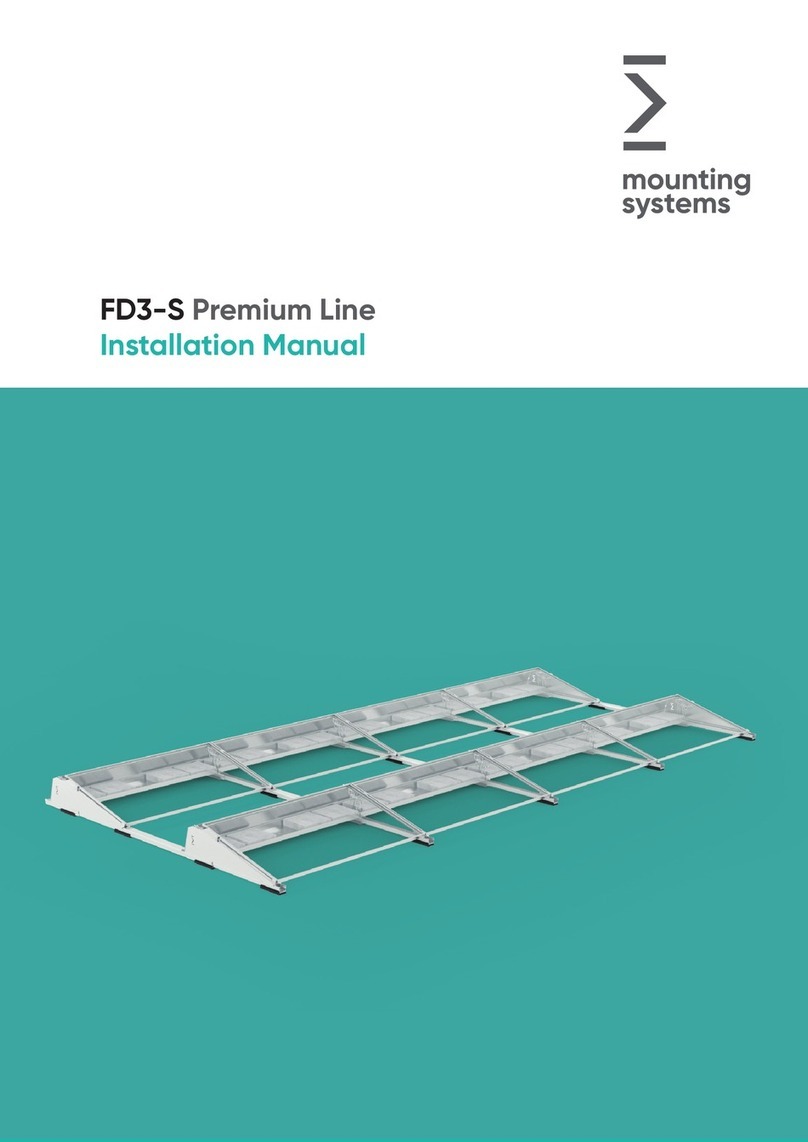
Mounting Systems
Mounting Systems Premium Series installation manual
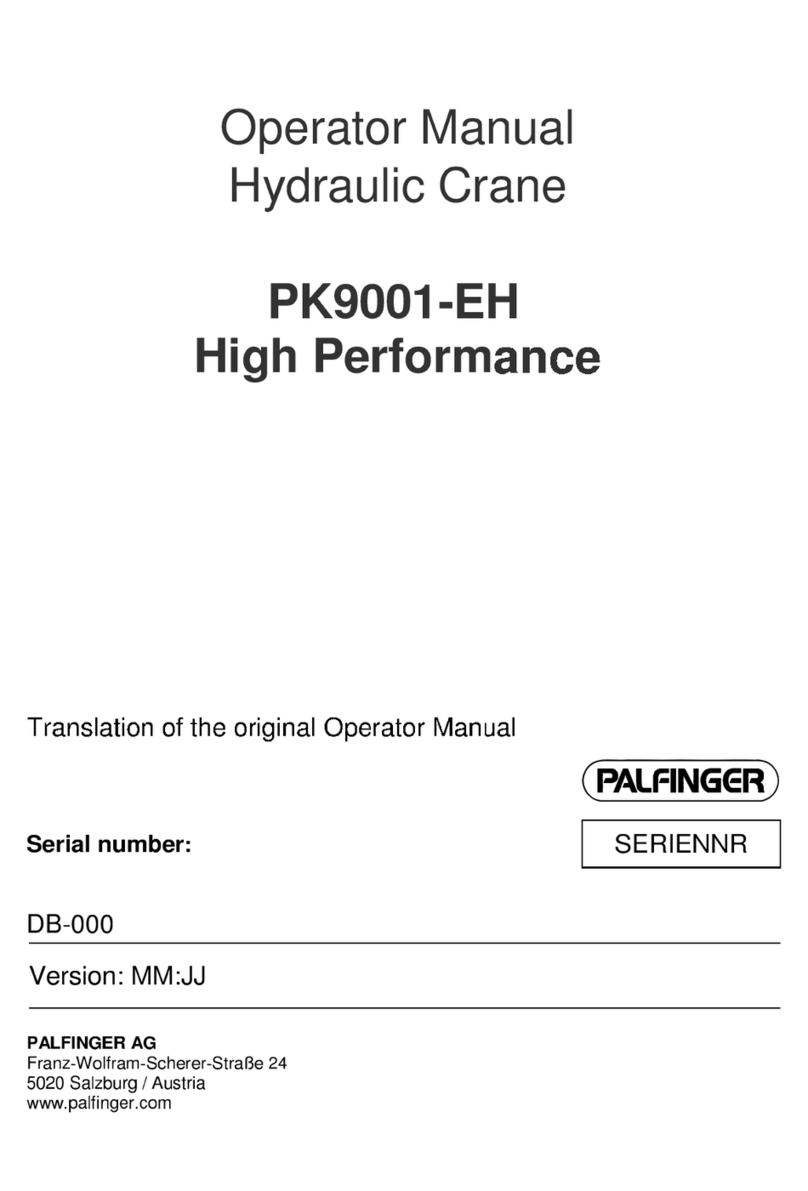
Palfinger
Palfinger PK9001-EH Operator's manual

Innovatech
Innovatech Teerminator-2000 Operation and maintenance manual
